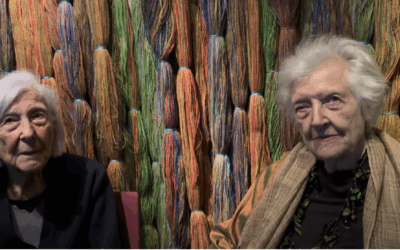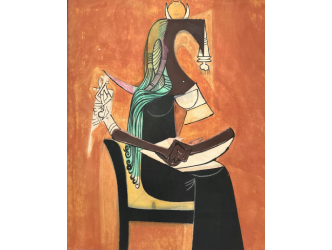Wolfgang Tillmans (born in 1968) is a major figure in the global art scene. For some forty years, the German artist has practiced photography—but not merely in order to capture images. He’s what we call, in the French jargon, a “plasticien.” A creator of forms.
He has a soft voice, a childlike smile, and a contemplative gaze—as his pictures attest—but he is also an artist of unwavering discipline.
6000 m2
Through September 22, Tillmans is the star of the Paris art world. The show dedicated to him is the last major exhibition hosted in-house by the Centre Pompidou before the museum shutters for five years. It’s installed in an unusual space: the 6,000 square meters of the Bibliothèque publique d’information (BPI, or Public Information Library), which has been almost entirely emptied of its books. What unfolds is a stroll (literally, given the enormity of the space) through the entirety of the artist’s universe.
Ghosts of the BPI
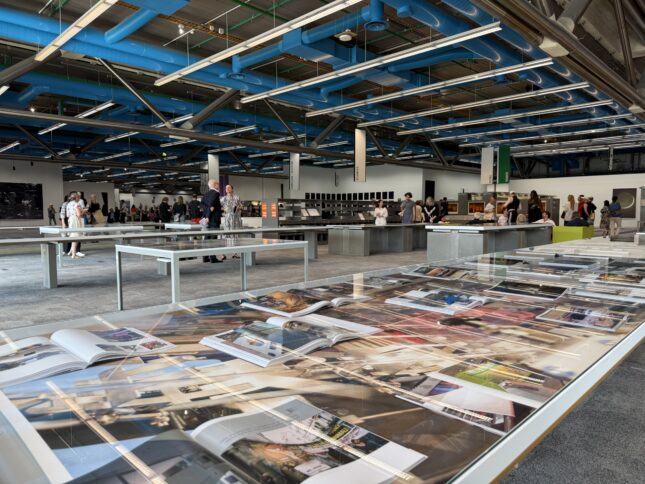
Tillmans has already demonstrated his brilliance at shows at the Fondation Beyeler (See the report with the interview of Wolfgang here) London’s Tate, and, most recently, his virtuosic MoMA exhibit in New York (See the report with the interview of Wolfgang here). In Paris, the effect is even more stunning.
First, there’s the setting: the emblematic exposed ceiling pipes, empty tables and metal bookshelves, video viewing booths—and the floor. The carpeting bears the marks of the space’s past uses, with green and purple stains that, like ghosts, indicate where furniture once stood. The leftover aesthetics of the library fit Wolfgangs’ work perfectly.
All about the details
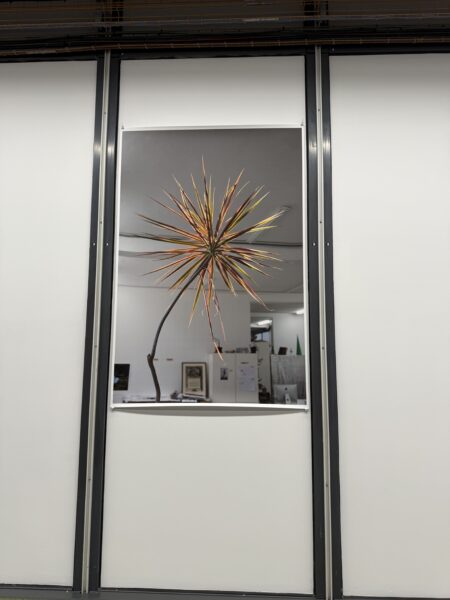
He says, of this show that he prepared in just eighteen months: “It’s all about the details. About caring for these 6,000 square meters. When I first saw the empty library, I thought it looked like neglected, unloved. But with the Centre’s exceptional team, we made it feel fresh—with, for instance, the library’s shadows that resemble photograms. (1) And then at a certain point you have to know when to stop. In this case, I could only get to that point the day before the opening.”
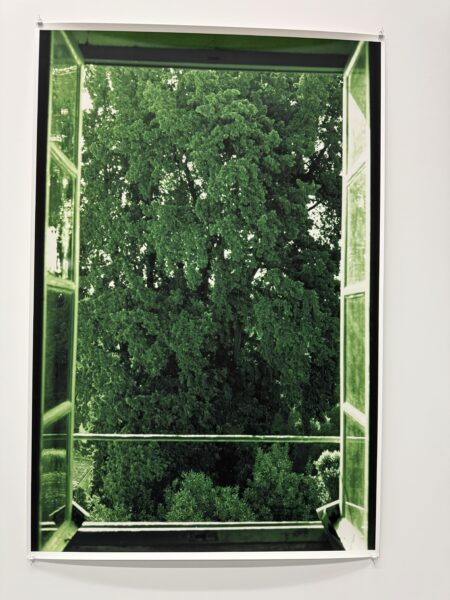
Dancing prints
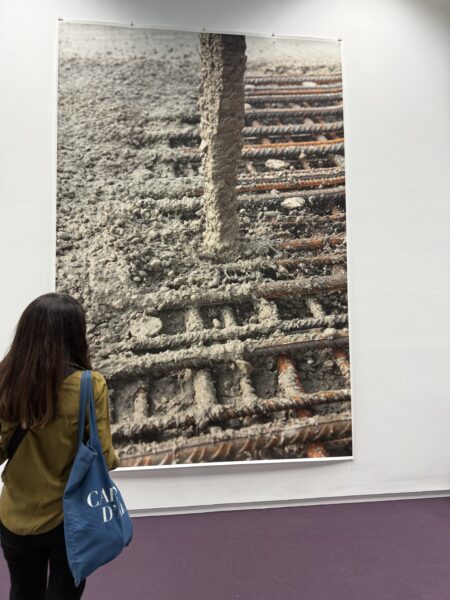
Tillmans has invented a style of photographic installation where the prints literally dance with one another. The work is the whole. Images of the mundane, everyday details, portraits of friends and fragments of life come together and speak to one another. So do the colors. There are also works that resemble abstraction—a close-up of a leaf’s crease, a smear of ink in liquid. There are no major and minor subjects. To create this signature harmony, some images are pinned to the wall like ordinary found paper, while others are carefully framed. Clearly, Tillmans likes to play with different formats. At the BPI, some prints are propped up under plexiglass on the empty shelves, others lie flat on the tables.
Nothing could/Everything could

As for the show’s enigmatic title—“Nothing Could Have Prepared Us. Everything Could Have Prepared Us”—the artist explains that on a personal level, he finds himself, “stuck between two realities. You want to control your path, get better at reading life’s signs, but it’s impossible. I thought of the title two years ago. I couldn’t have known how politically resonant it would feel today.”
This exhibition will be remembered.
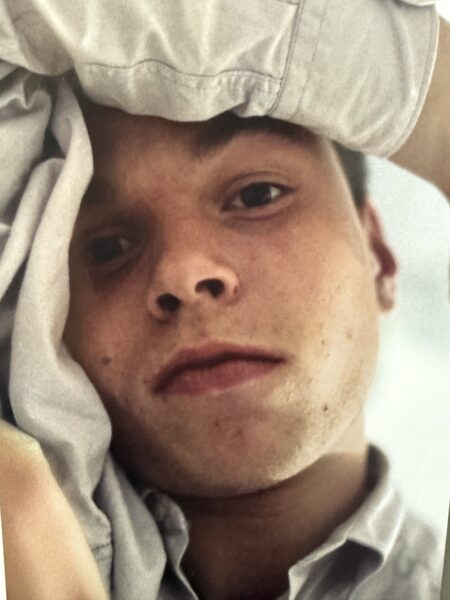
Until 22 September. https://www.centrepompidou.fr/fr/programme/expositions
(1) A photogram is an image printed by projecting light onto an object placed in front of photographic paper. A process used, among others, by Man Ray.
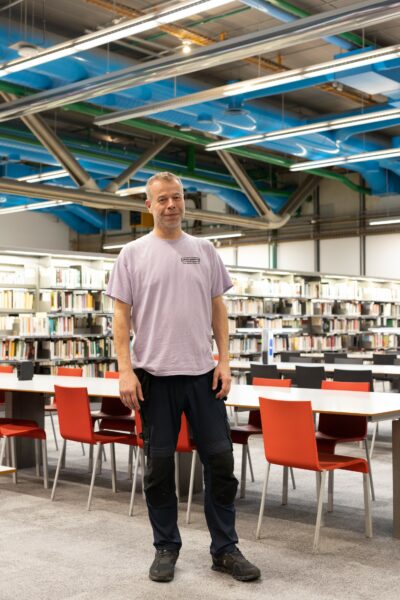
Support independent art journalist
If you value Judith Benhamou Reports, consider supporting our work. Your contribution keeps JB Reports independent and ad-free.
Choose a monthly or one-time donation — even a small amount makes a difference.
You can cancel a recurring donation at any time.


